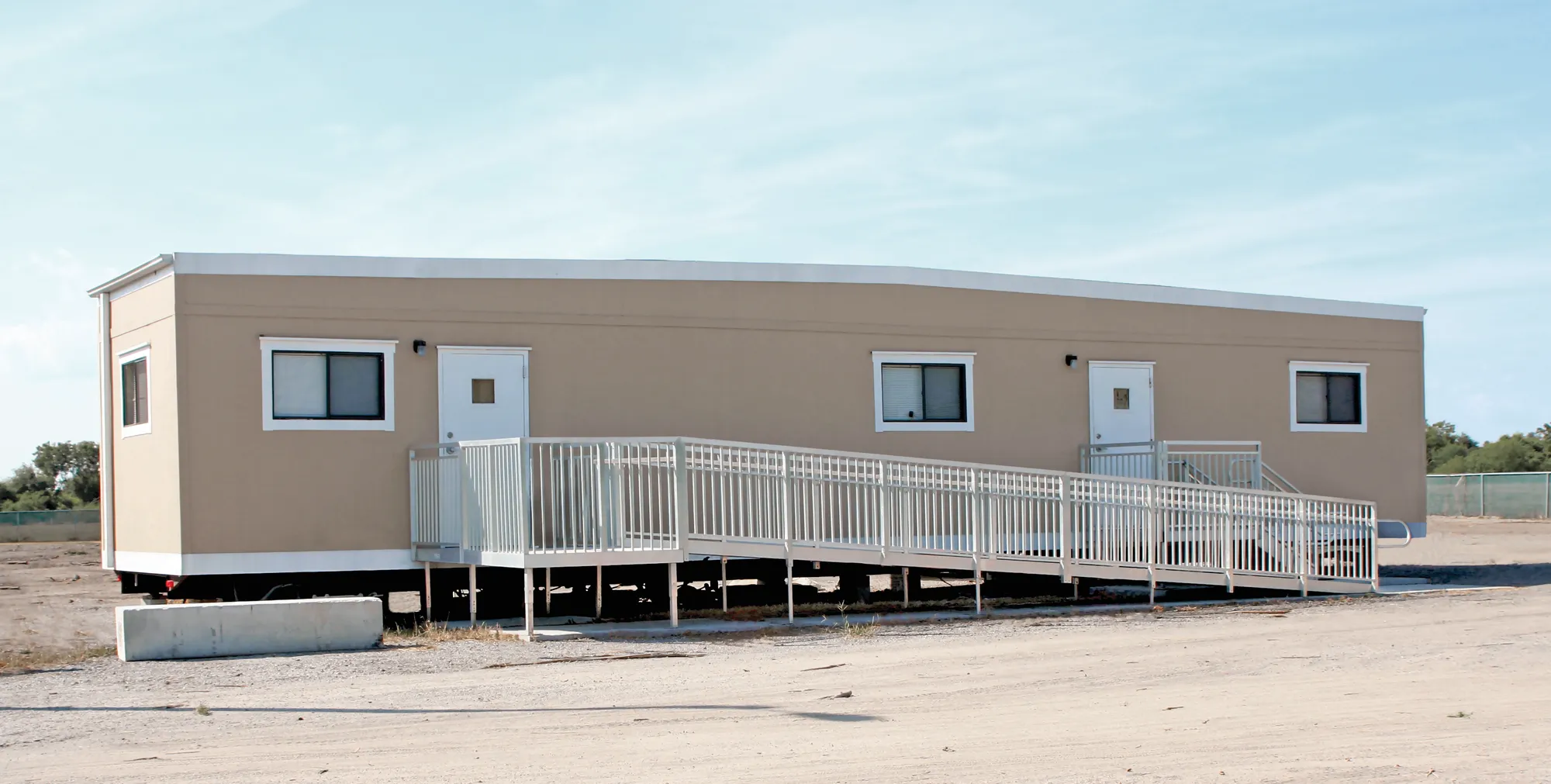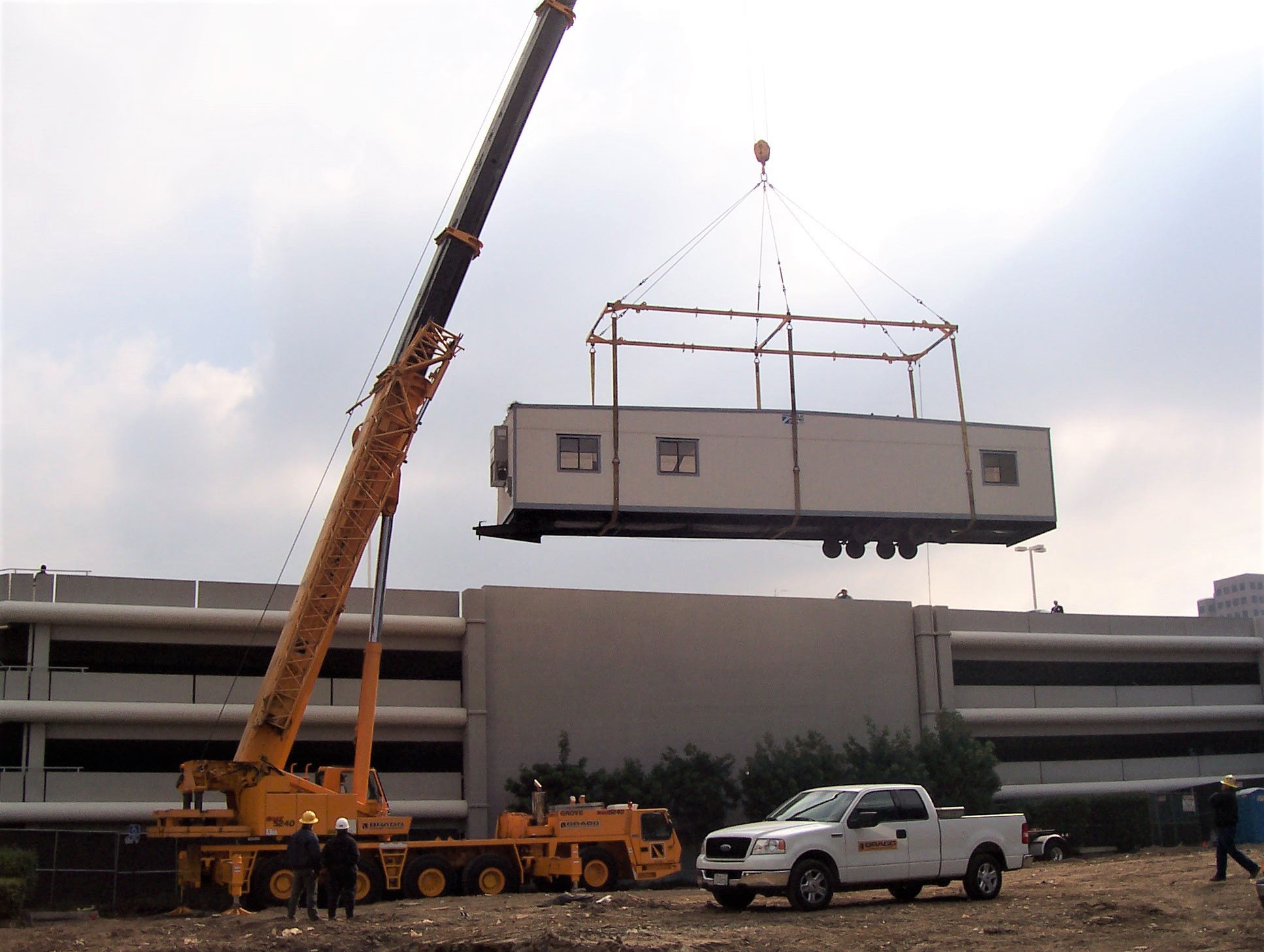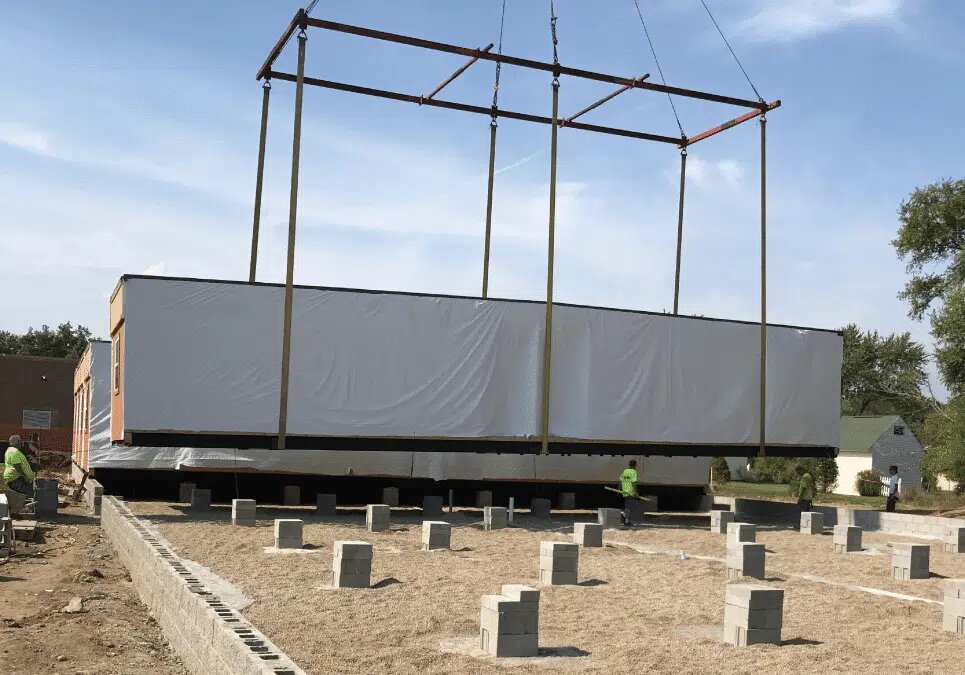As the construction industry struggles to keep up with increasing demand for both temporary and permanent buildings, modular construction has continued to garner more industry attention.
Explore this guide to modular construction and learn more about the process and what you can expect.
What Is Modular Construction?
Modular construction is an offsite building process wherein prefabricated “modules” are built in a controlled warehouse or factory-like environment. Once completely fabricated, the individual modules allow for convenient transport to the construction site. Later on, these parts will be installed and assembled on-site to make a completed modular building.
In other terms, modular construction is the process of assembling a building using pre-built or pre-assembled separate pieces that will later be installed and fixed together to make your final completed product on your campus or onsite location with Mobile Modular.
Types of Modular Construction
There are multiple types of modular construction. These processes apply to different sectors and generally focus on different types of buildings.
Volumetric Modular Construction
This method includes the process of assembling completely enclosed, fabricated modules. Whether they are connected side-by-side or stacked multiple stories high, assembling these modules creates a final building.
What makes volumetric construction unique is that it uses modules that are fully enclosed. It may include modules that are open-sided or partially open-sided, corner load-bearing modules, and non-load-bearing modules.
Commercial Modular Construction
Modular commercial building construction entails creating standalone buildings or complexes for all types of businesses and organizations, such as call centers, manufacturers, healthcare organizations, and religious organizations, for example. These modular buildings are designed to adhere to commercial building codes and can serve as permanent modular structures or temporary turnkey solutions.
Residential Modular Construction
Modular building processes can also be used for residential construction. While these homes and apartment complexes have different building codes than commercial construction, they also have a similar process—different sections of a home are assembled in a climate-controlled factory setting off site and are delivered before workers connect them.
Stick-Built vs. Modular Construction
The biggest difference between modular construction and traditional construction is where the actual building of the infrastructure takes place. As mentioned above, modular construction is a form of offsite construction, meaning the building modules are assembled away from the site in a factory setting. This difference gives modular construction a quicker turnaround time than traditional or stick-built construction methods.
While the site is being prepared and permits are being acquired, the building can be constructed. These concurrent processes save time and money, with some estimates showing modular construction has a 30–50% faster turnaround time.
Prefab vs. Modular Buildings
The differences between modular and prefab construction are nuanced. Technically, all modular buildings are prefabricated, but not all prefabricated buildings are modular.
Modular building methods typically focus on the assembly of fully or nearly closed modules. Conversely, prefab construction includes a broader set of building methods, with everything from pre-built modules to smaller components like pre-built walls or floors.
How Modular Construction Works
The modular construction process is fairly straightforward. Here is what you can expect from a standard design-build construction project using modular methods.
1. Designing Your Project
As with any other architectural project, the modular building process starts at the drawing board. However, the most noticeable difference with constructing modular buildings is that they tend to be more intricately planned and detailed because they are fabricated off-site. Your general contractor or modular building dealer will ask about your design needs, industry standards, and budget to better understand how to design your new commercial space.
The initial planning process is so rigorous because it gives you the best return on your building investment. It also helps your contractor develop an accurate budget and projected timeline.
2. Modular Building Engineering Analysis
Once your contractor has completed the initial design, there needs to be a thorough engineering check. No building plans can be approved unless certified engineers from a registered government agency check the blueprints for any violations of local construction codes.
Agencies such as the International Energy Conservation Code (IECC) ensure that there are no health or construction hazards and that all required safety measures are in place.
Around the time of this inspection, your developers will also take the steps to obtain permits so they can install the modules where you need them. This is essential for permanent modular construction and typically involves acquiring site plan permits, construction permits, concrete usage permits, and others such as those required for mechanical or plumbing work.
3. Construction Site Development
Once your developer has acquired the permits you need, development of your construction site will begin.
Apart from the assembly of prefabricated modules, site development is the only aspect of modular construction that takes place on-site. Once engineers and experts have surveyed the area to assess the type of land they will be working with, the foundation is laid out.
The land must be excavated until the desired depth is reached; this is also necessary to allow the installation of a drainage system. The last step includes installing a stable foundation on which the building will be placed.
4. Module Fabrication
Module construction occurs while your site is being prepared. The process begins with a welded steel frame on which the entire module will be based—including its base floors, walls, and ceiling.
Once this skeleton is finished, workers will add electrical and plumbing accessories to the module. They will also add interior design features such as doors, flooring, and paint.
5. Transportation and Installation
Once the modules are completed, they are transported to the site for final assembly. Due to regulations on the size of modules that can be transported, these are generally built on a predefined scale.
Benefits of Constructing Modular Buildings
One of the greatest benefits of modular construction is that it is typically more efficient than other methods. These are some of the benefits of the modular building process.
Sustainability
Sustainability is easier to attain with modular construction methods because they reduce the amount of pollution and greenhouse gasses that would normally be emitted during site-built construction.
Affordability
Because they are more efficient to construct and always use an established amount of materials, modular buildings tend to be more affordable than their traditionally constructed counterparts.
Durability
Whether they are intended as “temporary” buildings or permanent space solutions, modular buildings can withstand the elements and offer energy efficiency for decades to come.
These modular buildings can withstand wear and tear from the toughest jobs, be it as a classroom for preschoolers or a clean room for your manufacturing plant.
Flexibility
Modular buildings offer flexibility for complex designs. In addition to being available in standard configurations, they can be built as complexes that serve multiple purposes. Additionally, they can be utilized as either temporary or permanent building solutions for short-term projects or as a long-term space for your operations.
Customization
Along with their flexibility, modular construction offers ample opportunities for customization—without having to pay tens of thousands more dollars to get a custom-designed space. Modular buildings can have customized configurations that suit every type of operational need that may arise for your organization.
Common Modular Building Dimensions
Many modular buildings have standardized dimensions, but the requirements can vary from state to state.
There are typically five common widths that are standard for modular buildings. At a glance, these widths are:
- 12 feet
- 13 feet
- 13 feet and 9 inches
- 14 feet and 9 inches
- 15 feet
The length of your modular building can also vary by manufacturer or location. Most are built to be 60 feet long, while some developers will create modules measuring up to 72 feet.
Based on federal regulations for cargo height, a typical module must be under 13 feet and 6 inches high. Consequently, with the addition of a carrier that keeps the module secure in transit, most building modules are 8–9 feet tall.
How Much Does Modular Construction Cost?
The cost of your modular construction project varies. Prices can fluctuate depending on whether you’re purchasing or renting, and if your building is new or used. The amount of customization and complexity of your needs can also impact the final price.
However, the only way to get an accurate cost estimate for your modular construction project is to request a quote.
Request a Quote for Your Custom Building
Mobile Modular has been recognized as a leading provider in the modular construction industry. If you’re curious about how a modular construction project can benefit you and your clients, request a quote and get started today!





